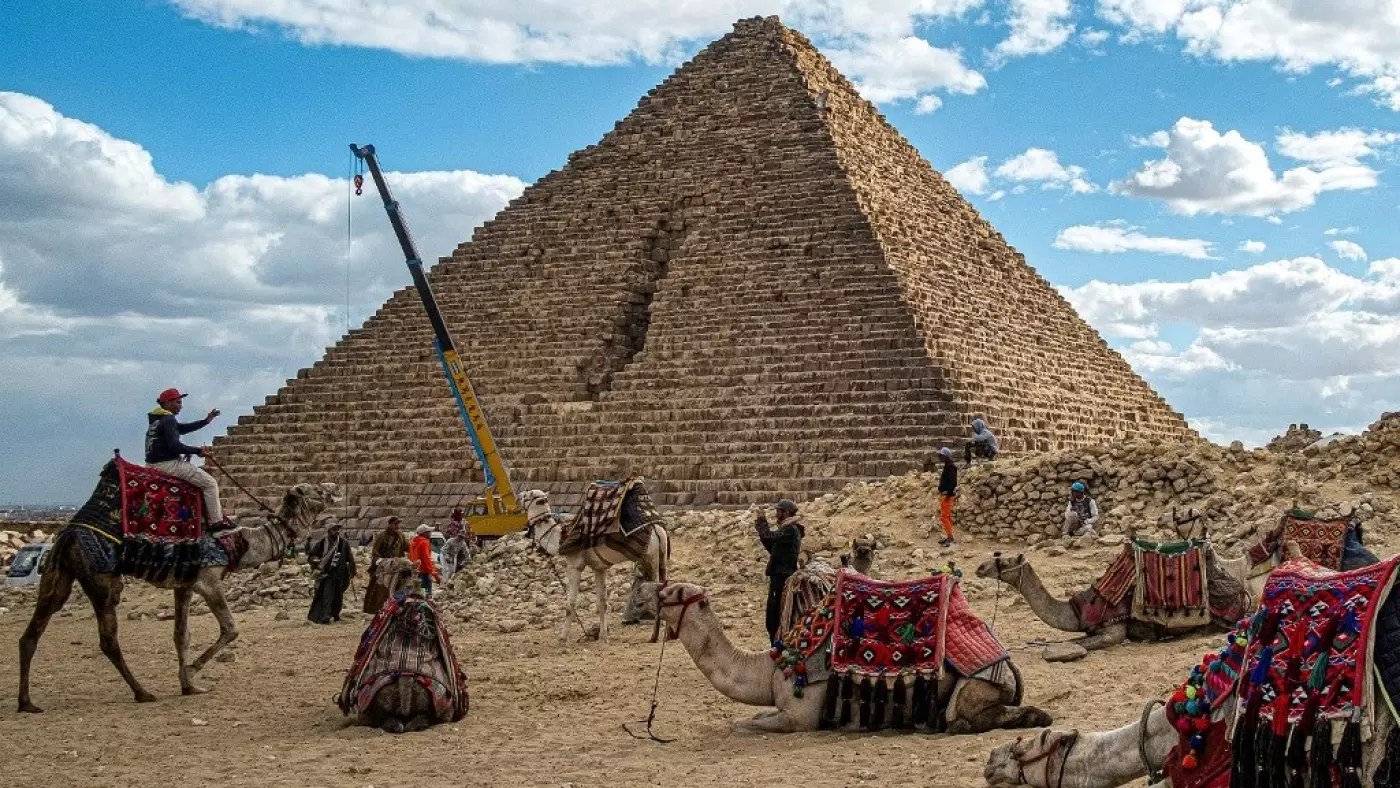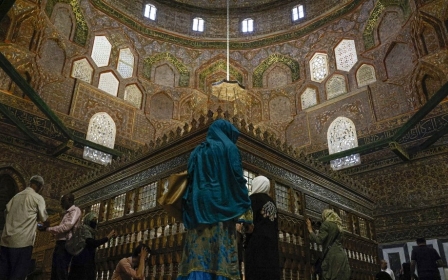Egypt: Pyramid renovation denounced as a ‘disaster’

Videos showing an Egyptian official supervising restoration work at the Menkaure pyramid near the sphinx in Giza has triggered outrage from conservationists and social media users.
In one video, posted on Facebook on Friday, Mostafa Waziri, the secretary-general of Egypt's Supreme Council of Antiquities, hailed the "project of the century", with workers setting blocks of granite on the base of the pyramid.
The Menkaure pyramid, built in the 26th century BC, is the smallest of the three main pyramids at the Giza Pyramids Necropolis, west of Cairo.
Waziri, who is the head of an Egyptian-Japanese mission tasked with the project, explained that the project aims at reconstructing the granite layer that encased the pyramid when it was originally built thousands of years ago. He said work is planned to last for three years and will be "Egypt's gift to the world in the 21st century".
However, the announcement has sparked a backlash from archaeologists, who warned that the project might be in contravention of international conservation standards.
“It is a sad disaster,” said Ibrahem Badr, an associate professor in archaeological restoration and conservation at Misr University for Science and Technology in Cairo. “[They] need to read the international conventions for restoration, and those dealing with Egyptian antiquities in particular.”
Badr criticised Egyptian authorities for approving the project without consultation with experts.
“The amount of tampering with Egypt's antiquities and heritage has become far beyond imagination,” he wrote.
“How can the pyramid be re-covered by a unilateral decision without taking the opinion of specialists in restoration sciences and archaeology?” he asked.
“This is utter ignorance. It shows as if our country is destroying its own history and heritage with foolish minds that do not know the basics of archaeological work and its limits.”
Meanwhile, Salima Ikram, a professor of Egyptology at the American University in Cairo, said that although the restoration “seems like a very good idea”, “Ideas about restoration and conservation change a great deal, and what was thought to be great when it was done is often criticised 10 years later.”
“It is a fine line to walk,” she added in a Facebook post.
Another Egyptologist, Monica Hanna, called on university professors in antiquities and restoration to “mobilise against this project immediately”.
“When is tampering with Egypt’s antiquities going to end? All international conventions in restoration reject this intervention in all its forms.”
A number of Egyptian social media users reacted to the project with sarcasm, with one posting a photo of the Tower of Pisa with the caption: ‘Italy’s project to straighten the Leaning Tower of Pisa’, and another recommending that Waziri be in charge of such a project.
In response to the barrage of criticism, Waziri appeared on several talk shows over the weekend to defend the idea, insisting that the project will only use existing stones scattered around the pyramid or underground.
In a phone interview with al-Hekaya on the Saudi-owned MBC, he told show host Amr Adib that the project will use the original stones that once covered about half of Menkaure’s pyramid and fell during an earthquake “less than a thousand years ago.”
He added that in the first year of the project, the Japanese team will conduct a scan to decide where the stones will fit.
The pyramid restoration project is not the first to spark criticism in Egypt. The government of President Abdel Fattah el-Sisi has been denounced for overseeing conservation works that affected other historical sites, including Unesco-listed City of the Dead and the St. Catherine’s nature reserve, as well as mosques such as al-Hussein mosque and most recently al-Mursi abu al-Abbas mosque.
Middle East Eye propose une couverture et une analyse indépendantes et incomparables du Moyen-Orient, de l’Afrique du Nord et d’autres régions du monde. Pour en savoir plus sur la reprise de ce contenu et les frais qui s’appliquent, veuillez remplir ce formulaire [en anglais]. Pour en savoir plus sur MEE, cliquez ici [en anglais].







